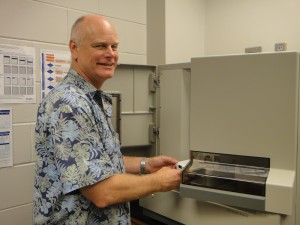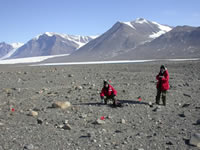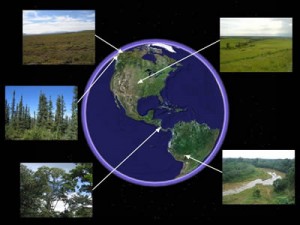
Example GSB sites from North and South America
Project aims
Current knowledge on latitudinal gradients of taxonomic groups is almost entirely based on aboveground organisms. Most vascular plant and vertebrate species are believed to be concentrated in biodiversity “hotspots,” usually considered of high priority for conservation because of their high species richness and concentration of endemic species.
Soil ecosystem functions (e.g., nutrient mineralization) are widely linked to soil biodiversity, yet there is no existing data showing global patterns of soil biodiversity for most taxonomic groups, or how these patterns compare with aboveground biodiversity patterns in the designated global “hotspots” or “coldspots” (areas of poor plant and animal species diversity). How the pattern of distribution of soil-dwelling species across large spatial scales affects ecosystem function is also unknown.
The objectives of the study were to test the hypotheses that:
- global distribution of soil faunal species is related to body size;
- hotspots of soil biodiversity at both regional and local scales are associated with high process rates of carbon and nutrient mineralization and gaseous exchange.
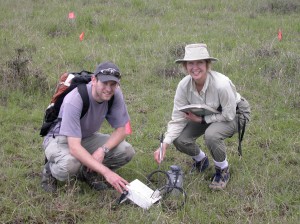 Ed Ayres and Diana Wall measuring soil respiration |
The research specifically addresses whether smaller faunal species (<1 mm body size) are ubiquitous in their distribution, while the majority of larger fauna (>1 mm body size) have restricted distributions; and whether three ecosystem measures (soil respiration, carbon mineralization, and nitrogen mineralization) are related to higher biotic species richness in soils. Thirteen global sites on a latitudinal gradient will be sampled, allowing within-continent and cross-continent comparisons of aboveground hot- and coldspots. Sequence data from a novel, rigorous molecular technique, combined with morphological and ecosystem data from soil invertebrates of varying body sizes, will provide an integrated knowledge base at the fine resolution of species and will be related to ecosystem function.
Intellectual Merits: The study confronts a major challenge to scientists by enhancing current knowledge and an understanding of global patterns of biodiversity and their
relationship to ecosystem function. By integrating basic ecological theory and global ecology, the research will help expand the crucial information base necessary for the establishment of future research priorities in conservation and biomonitoring. Such a multidisciplinary approach will lead to a broader integration of aboveground-belowground global patterns of biodiversity and biogeochemistry. The combined molecular and morphological methods will help answer current questions on endemic and cosmopolitan distributions and redundancy of soil biota.
Results of the study: Due to the use of both molecular and morphological methods in identifying, we have been able to report the difference in sensitivity between these techniques in identifying groups of soil animals (see Wu et al. 2009). Differences between morphological and molecular techniques in identifying “taxonomic” groupings within soils are likely due to the methods used in isolating organisms or DNA from the substrate, although broadly speaking both analytical methods provided similar conclusions regarding diversity at the two site types (boreal forest or tundra).
The main findings of the global study have been accepted into the Proceedings of the National Academy of Sciences. Here we show the relative diversity of each group of soil organisms globally. No taxa were found to be held in common across all sites globally, and only 14 of the identified Operating Taxonomic Units (OTUs) were found common to 4 or more of the studied sites. Our data also suggest that there may exist an inverse relationship between above- and belowground diversity globally.
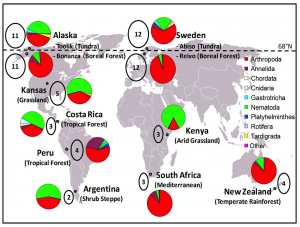
Relative distribution of taxa from each site (click for larger)
